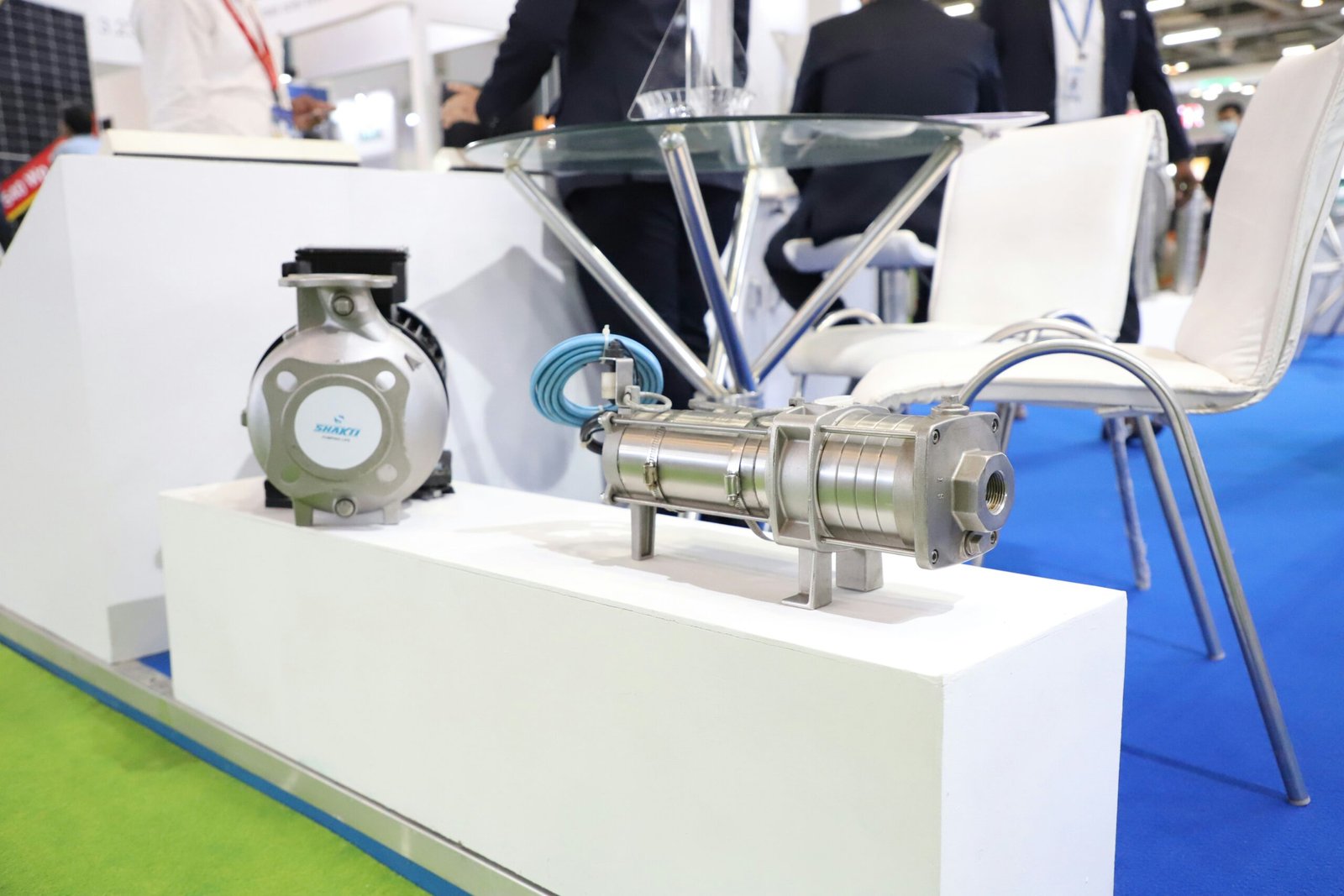Current State of the Global Equipment Market
The global equipment market has been undergoing significant transformations, deeply influenced by various economic factors and changing consumer behaviors. According to recent surveys, the market shows a mixed picture characterized by fluctuations in demand and supply across different regions. In the last year, notable regions, such as North America and Asia-Pacific, have experienced a surge in the demand for heavy machinery, driven by ongoing infrastructure projects and increased manufacturing activities. The global equipment market is projected to grow at a compound annual growth rate (CAGR) of approximately 5% over the next five years, indicating resilient demand despite prevailing challenges.
However, supply chain disruptions have posed substantial hurdles for suppliers and manufacturers, leading to delays and increased costs. Recent statistics indicate that over 60% of equipment manufacturers have cited supply chain issues as a primary factor hampering their ability to meet market demand. This has prompted many businesses to rethink their sourcing strategies and to place a greater emphasis on local suppliers to mitigate risks associated with long-distance transportation.
Moreover, pricing strategies have also evolved in response to market conditions. Pricing has steadily escalated, with reports showing that equipment costs have risen by nearly 8% over the past year due to inflationary pressures and increased material costs. Consumers are becoming more price-sensitive and demanding value-driven solutions. As a result, companies are now focusing on enhancing their product offerings and promotional strategies to attract and retain customers in a competitive landscape.
In summary, the current state of the global equipment market reflects a complex interplay of increased demand, supply chain disruptions, rising costs, and changing consumer preferences. Addressing these challenges while capitalizing on growth opportunities will be crucial for stakeholders aiming to navigate this evolving market effectively.
Emerging Trends and Technologies
The equipment market is currently undergoing significant transformations driven by advancements in technology and evolving operational practices. One of the most notable trends is the rise of automation across various sectors of the equipment industry. Automation enhances efficiency and reduces operational costs, making it an attractive option for companies seeking to optimize their workflows. As businesses increasingly adopt automated solutions, they can better allocate human resources to more strategic tasks, thereby improving productivity and innovation.
Additionally, the emphasis on sustainable practices is gaining traction within the equipment market. Companies are prioritizing eco-friendly technologies and processes, which not only meet regulatory standards but also cater to the growing consumer demand for environmentally responsible solutions. Integrating sustainable practices involves focusing on energy efficiency and utilizing materials that reduce waste, thereby contributing to lower operational costs and a smaller carbon footprint. These shifts are reflected in consumers’ purchasing decisions, suggesting that businesses emphasizing sustainability may have a competitive edge in attracting clients who prioritize ethical practices.
Moreover, the integration of digital solutions in equipment management is reshaping industry standards. Technologies such as the Internet of Things (IoT), artificial intelligence (AI), and data analytics are being harnessed to improve equipment monitoring and maintenance. With IoT, companies can collect real-time data on equipment performance, enabling predictive maintenance that reduces downtime and extends the lifespan of assets. The application of AI and advanced analytics allows firms to make informed decisions based on comprehensive data insights, thus enhancing operational efficiency and overall strategy.
In light of these emerging trends and technologies, businesses within the equipment market must adapt to stay competitive. Embracing automation, sustainable practices, and digital innovations will be critical for organizations aiming to thrive in this rapidly evolving landscape. Understanding these shifts can empower companies to refine their strategies and better meet the ever-changing demands of consumers and markets.
Regional Insights and Market Segmentation
The global equipment market exhibits significant geographical variances, influenced by regional economic conditions, industry demands, and regulatory frameworks. North America stands as a robust market due to its advanced infrastructure and technology adoption. In the construction sector, for instance, there’s a growing demand for innovative and efficient equipment, driven by urbanization and a push for sustainable practices. However, challenges such as fluctuating material costs and labor shortages remain prevalent.
Meanwhile, Europe showcases a dynamic landscape for agricultural and manufacturing equipment. Countries like Germany and France lead in innovation, supported by strong government initiatives aimed at enhancing productivity. The emphasis on precision agriculture has led to the increased adoption of smart farming technologies, effectively driving market growth. However, stringent regulations pertaining to environmental impact may serve as a barrier for some equipment manufacturers, necessitating a balance between compliance and innovation.
In the Asia-Pacific region, rapid industrialization and an expanding population are significant growth drivers for the equipment market. Nations such as China and India are investing heavily in infrastructure, thus increasing the demand for construction equipment. Moreover, the region is becoming a hub for manufacturing activities, further boosting the business landscape. Nonetheless, factors such as trade tensions and regulatory hurdles could impact market stability.
Other regions, including Latin America and the Middle East, exhibit varied trends influenced by local economic conditions. The Latin American market is notably driven by agricultural equipment due to extensive farming activities, while the Middle East shows burgeoning growth potential in construction equipment, largely spurred by ongoing infrastructural projects. Overall, understanding the unique drivers and barriers specific to each region is crucial for businesses and investors aiming to tailor their strategies effectively in the global equipment market.
Future Projections and Strategic Recommendations
The global equipment market is experiencing significant transformations, and various surveys suggest several key trends that may shape its trajectory in the coming years. As economies recover from recent downturns, there is an anticipated resurgence in demand for equipment across multiple sectors, particularly construction, manufacturing, and logistics. These industries are projected to leverage increased investments and infrastructure developments driven by government policies aimed at stimulating economic growth. The role of technological advancements cannot be overlooked; innovations such as automation, artificial intelligence, and data analytics are expected to enhance operational efficiencies and redefine equipment utilization.
Furthermore, sustainability and environmental considerations are becoming increasingly integral to equipment procurement and operations. Organizations are likely to focus on adopting eco-friendly practices and investing in energy-efficient equipment. As regulatory frameworks align with sustainable development goals, businesses must ensure they are not only compliant but also positioned advantageously within this evolving landscape. Consequently, firms that prioritize sustainability will not only contribute positively to the environment but may also improve their market competitiveness.
For stakeholders looking to navigate these changes, several strategic recommendations emerge. First, it is essential to invest in market research to stay ahead of evolving trends and consumer preferences. Companies should consider diversifying their offerings to adapt to emerging technologies and changing demands. Forming strategic partnerships with technology providers can facilitate access to cutting-edge solutions and enhance product offerings. Moreover, training and upskilling staff will ensure that organizations can fully leverage new technologies and maintain a competitive edge.
In conclusion, the global equipment market stands at the brink of significant evolution. By understanding projected trends influenced by economic recovery, policy changes, and technological advancements, businesses can make informed decisions and strategically position themselves for success in an increasingly complex environment.









